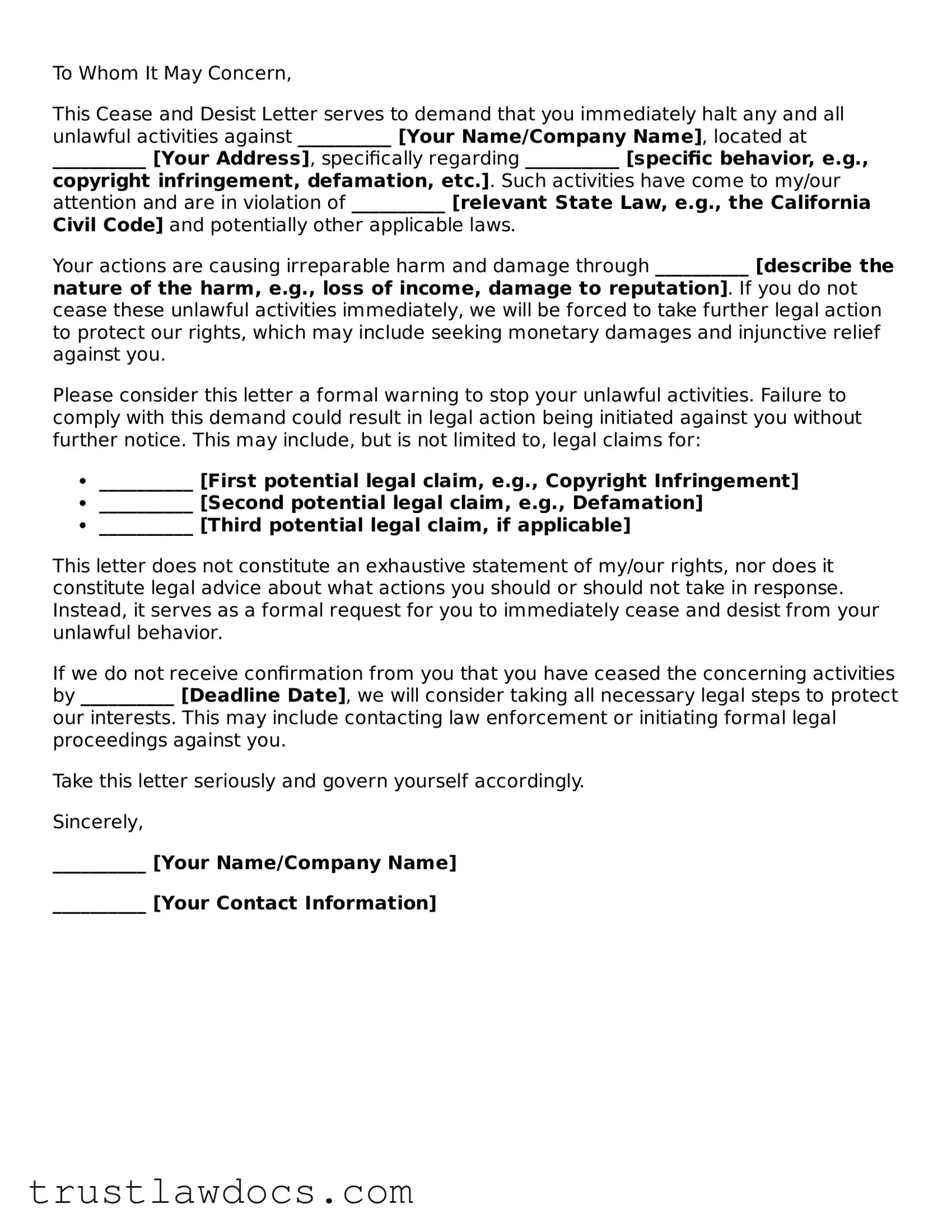What is a Cease and Desist Letter?
A Cease and Desist Letter is a document sent to an individual or entity to stop purportedly illegal activities. The letter serves as a formal request to halt the offending action and warns of legal action if the behavior continues. It sets the groundwork for taking legal steps if the situation isn't rectified.
When should I send a Cease and Desist Letter?
This letter is typically sent when someone believes their rights have been infringed upon. This could be in cases of harassment, defamation, trademark infringement, or unauthorized use of intellectual property. It's a preliminary step before pursuing litigation, aiming to resolve the issue swiftly without court intervention.
Is a Cease and Desist Letter legally binding?
No, a Cease and Desist Letter itself does not carry legal force. However, it can serve as evidence that the sender formally notified the offending party of their complaints and asked them to stop. If the situation leads to litigation, the letter might be presented in court to establish that the recipient was aware of the issue and chose not to rectify it.
What information should be included in a Cease and Desist Letter?
The letter should clearly identify the sender and the recipient, outline the specific issue or infringement, provide evidence supporting the claim, and specify the actions the recipient must take to resolve the situation. It should also detail the legal consequences of failing to comply with the request.
Can I write a Cease and Desist Letter myself?
Yes, individuals can draft their own Cease and Desist Letters. However, it’s highly recommended to consult with a legal professional. They can ensure that your letter accurately represents the legal aspects of your claim and adheres to any applicable laws, potentially increasing its effectiveness.
How do I deliver a Cease and Desist Letter?
Delivery methods vary, but it's crucial that the letter is sent in a way that can be tracked. Registered mail or courier services that require a signature upon delivery are common choices. This ensures that there is a record of receipt, which could be important if the issue escalates to legal proceedings.
What should I do if I receive a Cease and Desist Letter?
It's important to take such letters seriously. Consult with a legal professional to understand your rights and the best course of action. Ignoring the letter can lead to litigation, and the fact that you were notified of the complaint could be used against you in court. A lawyer can help you respond appropriately and protect your interests.
Can a Cease and Desist Letter be sent via email?
While a Cease and Desist Letter can be sent via email, it's generally recommended to send it through a method that provides proof of delivery. However, in situations where time is of the essence or if previous attempts through other methods have failed, email can be a faster alternative. Ensure to keep records of all correspondence.
What happens if the recipient ignores the Cease and Desist Letter?
If the recipient does not comply with the demands of the letter, the sender may choose to pursue legal action. The letter then serves as evidence that the recipient was made aware of the complaint and failed to address it. Legal proceedings can be initiated to enforce the sender's rights and seek remedies for the issue.
Is there a time limit for responding to a Cease and Desist Letter?
While the letter itself might specify a time frame for response, there's no standardized legal deadline. It’s wise to address the matter promptly. Delaying can be seen negatively, especially if the situation escalates to court. Consulting with a legal professional immediately can help you respond within an appropriate timeline.
